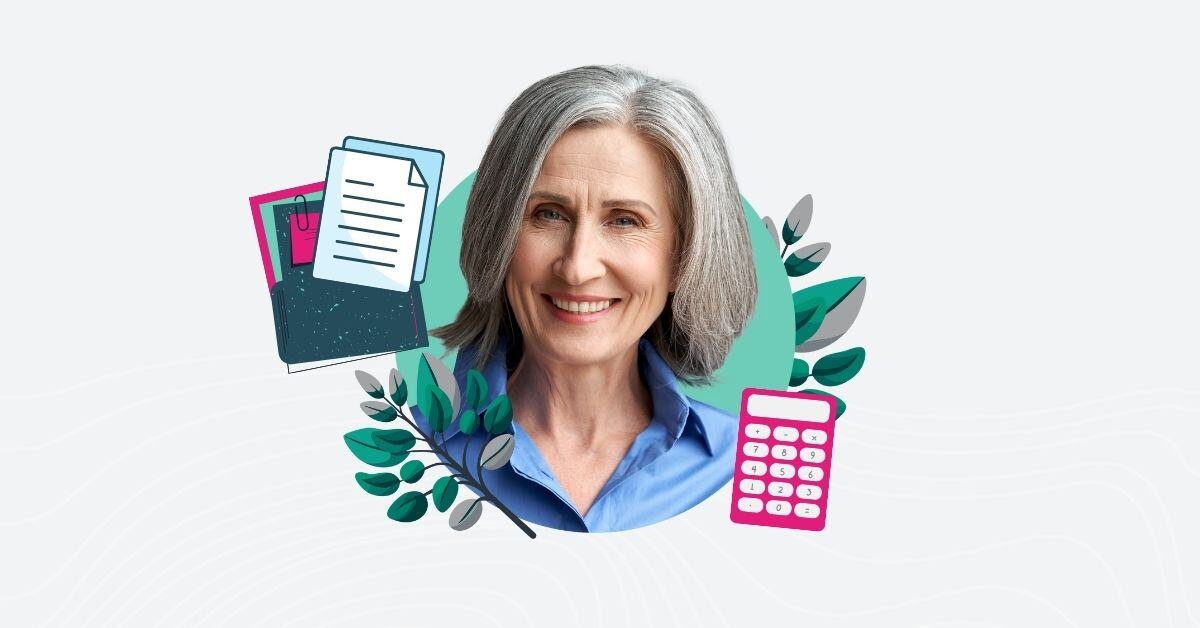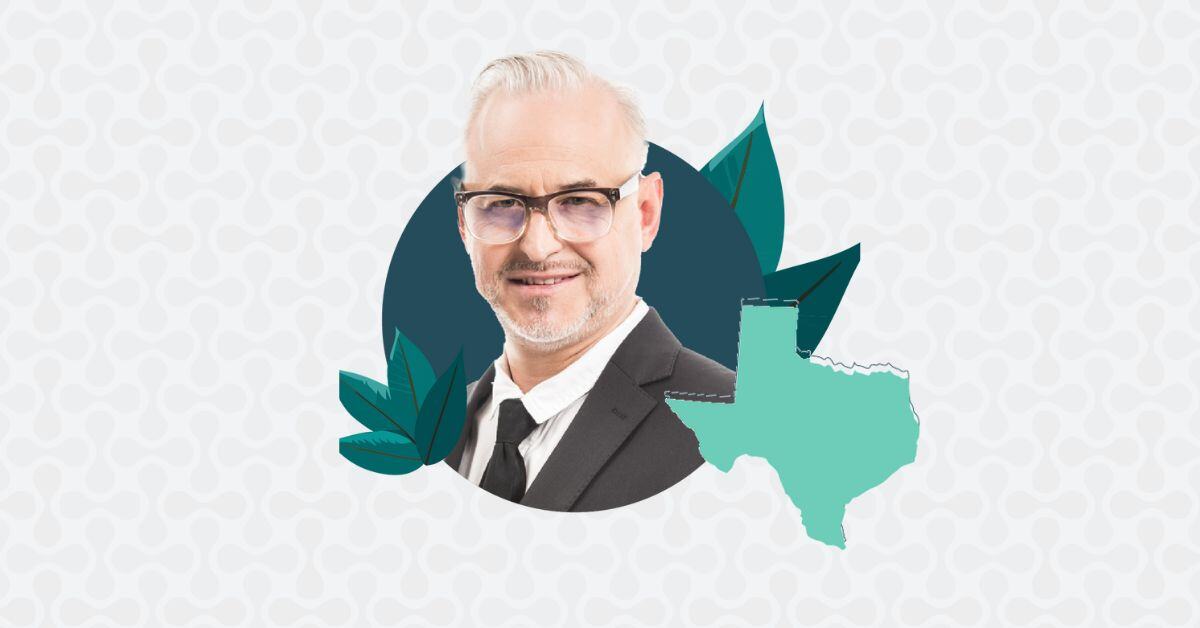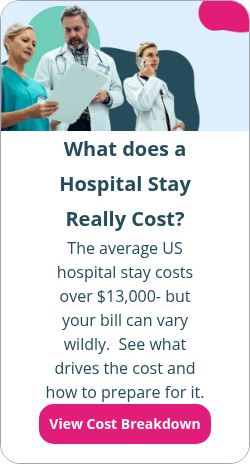2025 federal poverty guidelines
By Chase Charaba on January 23, 2025 at 4:40 PM
The federal government releases an updated federal poverty guidelines chart every January. Knowing if your household income falls below the federal poverty level helps you understand if you for several types of federal aid, including Medicaid eligibility.
This article will answer common questions about federal poverty level guidelines, including what the 2025 guidelines are and how the government calculates them.
In this blog post, you'll learn:
- How the 2025 federal poverty guidelines compare to previous years
- How the government calculates the guidelines and adjusts them annually for inflation
- How the IRS and other agencies use the federal poverty guidelines to determine eligibility for temporary assistance programs such as Medicaid and premium tax credits
What are federal poverty guidelines?
The federal poverty guidelines, also known as the federal poverty level (FPL), measure a household's poverty status based on its annual income. The FPL doesn’t look at just the income you take home—instead, your FPL is based on your modified adjusted gross income (MAGI).
MAGI includes all of your income sources, like:
- Salaries
- Interest
- Social Security
Where you fall on the FPL changes yearly. The federal government adjusts the guidelines annually for inflation. The Omnibus Budget Reconciliation Act (OBRA) of 1981 (42 U.S.C. 9902(2)) requires the United States Department of Health and Human Services (HHS) to release the poverty guidelines at the beginning of each year.
How does the government calculate the federal poverty level?
The Department of Health and Human Services calculates the federal poverty guidelines based on the United States Census Bureau's poverty thresholds released in the previous year.
The government determines the poverty threshold based on a family's total income. If total household income is less than the federally set family income threshold, the government considers the family to be in poverty. The threshold is calculated using income before taxes, and the DHHS updates it for inflation using the Consumer Price Index.
Once the Census Bureau releases its numbers for the previous year, the Department of Health and Human Services uses this information to calculate the federal poverty level based on family size.
There are some key differences between the FPL guidelines and the poverty thresholds. The thresholds are primarily used for statistical purposes and include a matrix of thresholds by family size, number of children, and more. The Census Bureau rounds the thresholds to the nearest dollar. The HHS guidelines, however, are for administrative purposes. HHS rounds the guidelines to the nearest multiple of $10.
How does the government use the federal poverty guidelines?
The DHHS, the IRS, and many state governments use federal poverty guidelines to determine your financial eligibility for several federal programs, including Medicaid, premium tax credits, cost-sharing reductions, and others. Let's go over each in more detail.
Medicaid eligibility
Your income must be no more than 138% of the FPL to qualify for Medicaid in states with expanded Medicaid coverage. That number will look slightly different for everyone, depending on where you live and how many people you have in your household.
For example, a single adult in California must make less than $21,597 per year to qualify for Medi-Cal, California’s state Medicaid program. However, an individual in Hawaii must earn less than $24,826 to qualify.
You can check the 2025 FPL guidelines chart below to see if you're eligible for Medicaid based on your home state and household size if your state has expanded Medicaid available.
If you reside in Puerto Rico, Medicaid uses a local poverty level instead of the FPL to determine eligibility. Additionally, the federal matching assistance percentage (FMAP) rate is applied until it reaches the Medicaid ceiling or the Affordable Care Act (ACA) funds granted to Puerto Rico run out.
Additionally, the District of Columbia has a special Medicaid eligibility threshold. In D.C., you’re eligible for Medicaid if your income is below 215% of the FPL.
If you don’t live in a state with expanded Medicaid eligibility, you won’t qualify for the benefit due to low income alone.
Premium tax credits for health insurance
Another important use of the FPL is determining eligibility for Marketplace subsidies. Depending on your income (and the affordability of your employer-sponsored health benefit), the health insurance you purchased through the federal or state-run marketplace may be eligible for premium tax credits.
The ACA created premium tax credits to help individuals pay for their marketplace health insurance premiums. You can choose to receive an advance credit each month or a credit on your income tax returns.
Before Congress passed the American Rescue Plan in 2021, the government only considered an insurance policy affordable if the annual cost for the benchmark plan was between 2% and 9% of your income, depending on where you fell on the FPL. You could receive a premium tax credit to lower your health insurance cost only if your income fell between 100% and 400% of the FPL.
The Marketplace uses the previous year’s FPL to determine tax credit eligibility. For example, suppose you enroll in a plan for the 2025 calendar year. In that case, the Marketplace will use the 2024 FPL and your projected 2025 income to determine your tax credit eligibility.
In 2022, Congress passed the Inflation Reduction Act. This extends the American Rescue Plan’s subsidies through the end of 2025, making marketplace health coverage more affordable for all Americans.
The Inflation Reduction Act removed the income limit, mandating that all Americans pay at most 8.5% of their income for health insurance. This increased the number of Americans eligible for premium tax credits and how much they could receive.
For example, people who earn between 100% and 150% of the FPL are now eligible for zero-premium coverage. Before, this group had to pay 2% or more of their income toward premiums.
If Congress doesn’t extend these enhanced tax credits, eligibility will return to only those with incomes between 100% and 400% of the FPL in 2026.
If you qualify for Medicaid or Medicare, you aren’t eligible for these tax credits1
Other programs
Determining eligibility for Medicaid and premium tax credits are two primary reasons the IRS and other agencies will use federal poverty guidelines. However, several other programs are available to low-income families that fall below a certain point on the FPL.
Here’s a list of programs you may qualify for depending on your income:
- Supplemental Nutrition Assistance Program2 (SNAP): More commonly known as food stamps or the Food Stamp Program, SNAP provides eligible people with a benefits card to buy groceries. You may qualify for SNAP benefits if:
- Your gross monthly income is at or below 130% of the FPL
- Your net income is at or below the poverty line
- And your assets fall below certain limits3
- Children’s Health Insurance Program (CHIP)4: CHIP offers free or low-cost medical and dental care to uninsured children up to age 19 whose family income falls below a specific limit.
- Low-Income Home Energy Assistance Program (LIHEAP)5: LIHEAP provides energy assistance and weatherization programs.
- Temporary Assistance for Needy Families (TANF)6: TANF programs provide cash assistance for a limited time to low-income families working toward self-sufficiency.
- Head Start7: Head Start offers early childhood education, health nutrition, and parent involvement services for free or at a reduced cost.
- National School Lunch Program8: The National School Lunch Program provides free or reduced-cost lunches to children in need—the program calculates reduced-price meals using 185% of FPL and free lunches using 130% FPL.
- The School Breakfast program also uses the 185% and 130% levels.
- Family Planning Services: The Title X Family Planning Program allows those with incomes below 100% of the FPL to access family planning and preventive services.
- Cost-sharing reductions: If you earn less than 250% of the FPL and enroll in a silver Marketplace plan, you may be eligible for a CSR.
But, not every federal program uses the FPL to determine eligibility.
Some “major-means-tested programs” that don’t use the FPL include:
- Supplemental Security Income (SSI)
- Earned Income Tax Credit (EITC)
- Section 8 low-income housing
Some state and local governments also use the federal poverty thresholds from the U.S. Census Bureau or DHHS guidelines to determine program eligibility. Private companies like utilities and charitable agencies may also use them for assistance programs for people with low incomes.
What are the current poverty guidelines for 2025?
You can find the current federal income guidelines9 in the tables below. FPLs differ between the lower 48 states and the District of Columbia, Alaska, and Hawaii.
Federal poverty levels for the 48 contiguous states and D.C.
|
Household size (individuals) |
2023 income numbers |
2024 income numbers |
2025 income numbers |
Medicaid eligibility (138% of the FPL) |
|
1 |
$14,580 |
$15,060 |
$15,650 |
$21,597 |
|
2 |
$19,720 |
$20,440 |
$21,150 |
$29,187 |
|
3 |
$24,860 |
$25,820 |
$26,650 |
$36,777 |
|
4 |
$30,000 |
$31,200 |
$32,150 |
$44,267 |
|
5 |
$35,140 |
$36,580 |
$37,650 |
$51,957 |
|
6 |
$40,280 |
$41,960 |
$43,150 |
$59,547 |
|
7 |
$45,420 |
$47,340 |
$48,650 |
$67,137 |
|
8 |
$50,560 |
$52,720 |
$54,150 |
$74,727 |
|
9+ |
Add $5,140 for each additional person |
Add $5,380 for each additional person |
Add $5,500 for each additional person |
FPL x 138% |
Due to administrative practices from the Office of Economic Opportunity in the late 1960s, Alaska and Hawaii have separate poverty measures from the other states.
FPL for Alaska in 2025
|
Household size (individuals) |
2023 income levels |
2024 income limit |
2025 income limit |
Medicaid eligibility (138% of the FPL) |
|
1 |
$18,210 |
$18,810 |
$19,550 |
$26,979 |
|
2 |
$24,640 |
$25,540 |
$26,430 |
$36,473 |
|
3 |
$31,070 |
$32,270 |
$33,310 |
$45,967 |
|
4 |
$37,500 |
$39,000 |
$40,190 |
$55,462 |
|
5 |
$43,930 |
$45,730 |
$47,070 |
$64,956 |
|
6 |
$50,360 |
$52,460 |
$53,950 |
$74,451 |
|
7 |
$56,790 |
$59,190 |
$60,830 |
$83,945 |
|
8 |
$63,220 |
$65,920 |
$67,710 |
$93,439 |
|
9+ |
Add $6,430 for each additional person |
Add $6,730 for each additional family member |
Add $6,880 for each additional person |
FPL x 138% |
FPL for Hawaii in 2025
|
Household size (individuals) |
2023 income levels |
2024 income limit |
2025 income numbers |
Medicaid eligibility (138% of the FPL) |
|
1 |
$16,770 |
$17,310 |
$17,990 |
$24,826 |
|
2 |
$22,680 |
$23,500 |
$24,320 |
$33,562 |
|
3 |
$28,590 |
$29,690 |
$30,650 |
$42,297 |
|
4 |
$34,500 |
$35,880 |
$36,980 |
$51,032 |
|
5 |
$40,410 |
$42,070 |
$43,310 |
$59,768 |
|
6 |
$46,320 |
$48,260 |
$49,640 |
$68,503 |
|
7 |
$52,230 |
$54,450 |
$55,970 |
$77,239 |
|
8 |
$58,140 |
$60,640 |
$62,300 |
$85,974 |
|
9+ |
Add $5,910 per additional person |
Add $6,190 for each additional family member |
Add $6,330 for each additional person |
FPL x 138% |
Are there other ways to save on health insurance?
While the federal poverty guidelines can help you understand your eligibility for premium tax credits and other discounts easier, they only work for some. If you don't qualify for advance premium tax credits or Medicaid, you may be wondering if there are other ways you can save on insurance costs.
See if your employer offers health benefits
Employers often offer traditional group health insurance policies, but organizations have other benefit options. Health reimbursement arrangements (HRAs) and health stipends are smart ways to save on health coverage while supporting employees.
Through a stand-alone HRA, your employer can reimburse you for the cost of your individual health insurance premiums and other qualifying medical expenses 100% tax-free. Your employer might also offer a stipend, which provides taxable funds for medical items, services, or premiums.
Open an HSA
If you’re covered by a high deductible health plan (HDHP), you can also open a health savings account (HSA) to save money for medical expenses. This is a savings account where you can put aside money for future medical expenses. Your employer can contribute to your HSA, and you can also contribute, whereas only employers fund an HRA or stipends.
Conclusion
Understanding federal poverty guidelines and how federal agencies like the IRS use them is an important step in getting more affordable health insurance, housing, education, and more. Depending on your family size and federal poverty level, you could be eligible for benefits such as premium tax credits and Medicaid.
With the changes made possible by the Inflation Reduction Act, more Americans have access to the care they deserve at a price they can afford through the end of 2025.
This blog article was originally published on March 17, 2021. It was last updated on January 23, 2025.
Check out more resources
See these related articles

What is IRS Form 944?
Learn what IRS Form 944 is, who needs to file it, and how it simplifies annual federal tax reporting for small businesses with lower payroll taxes.

Texas Health Insurance Exchange Update - Health Plan Rates
Texas health insurance exchange rates. An overview of the Texas health insurance exchange health plan rates, carriers, and available Federal Premium Subsidies.

Massachusetts Health Insurance Exchange Guide
Guide to Massachusetts's state health insurance exchange, MA Health Connector, and how this fits into federal health care reform.



